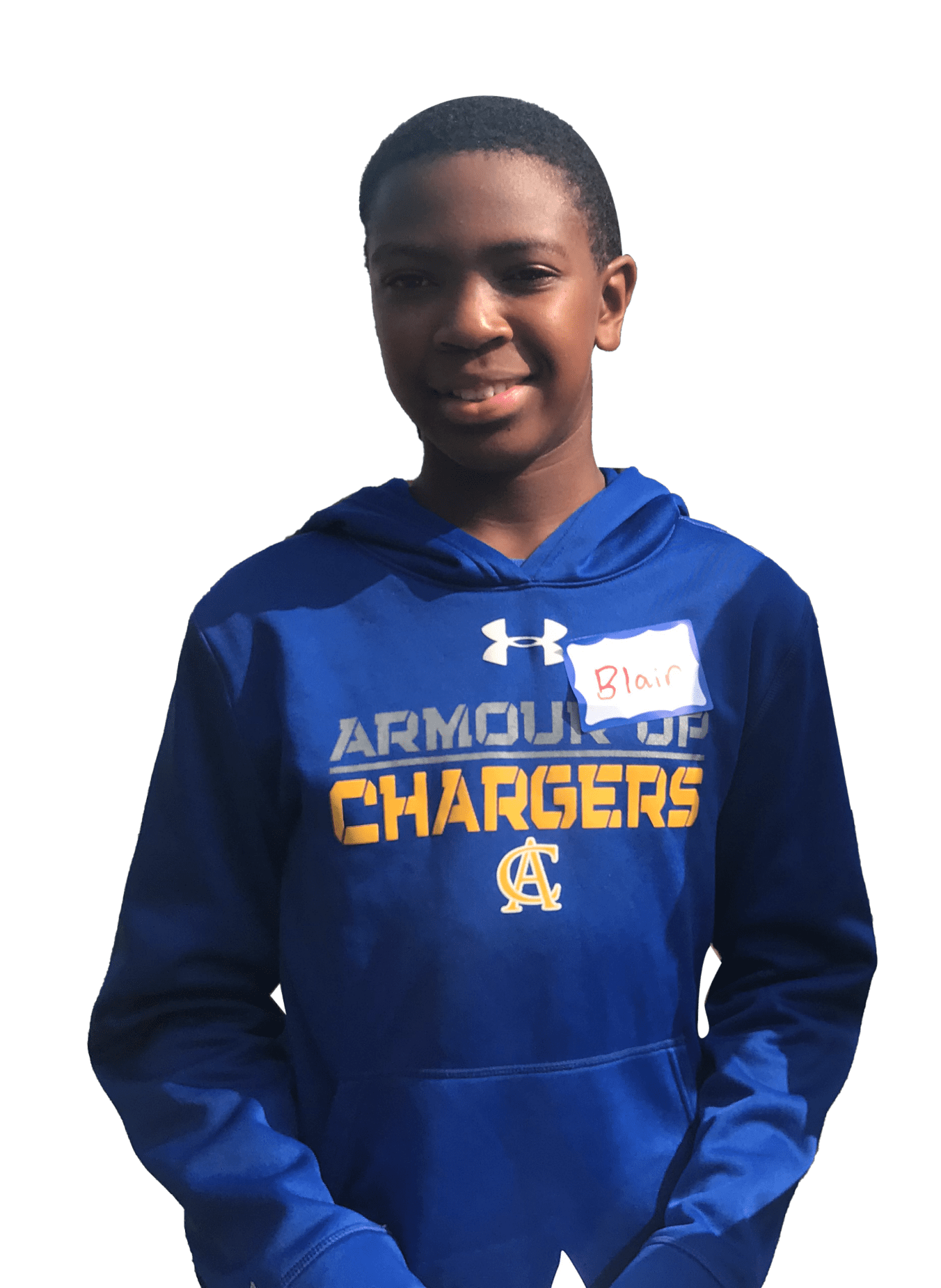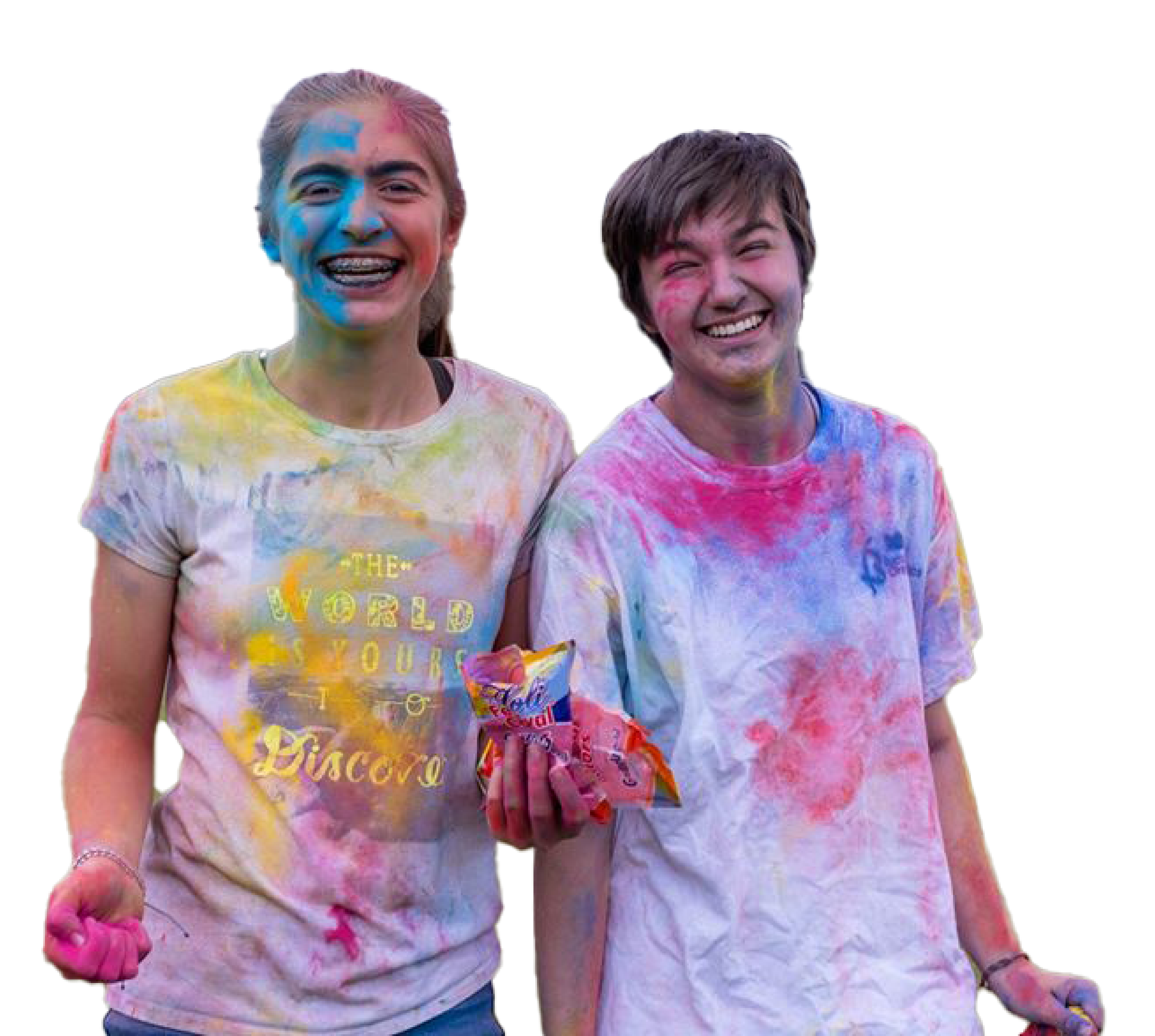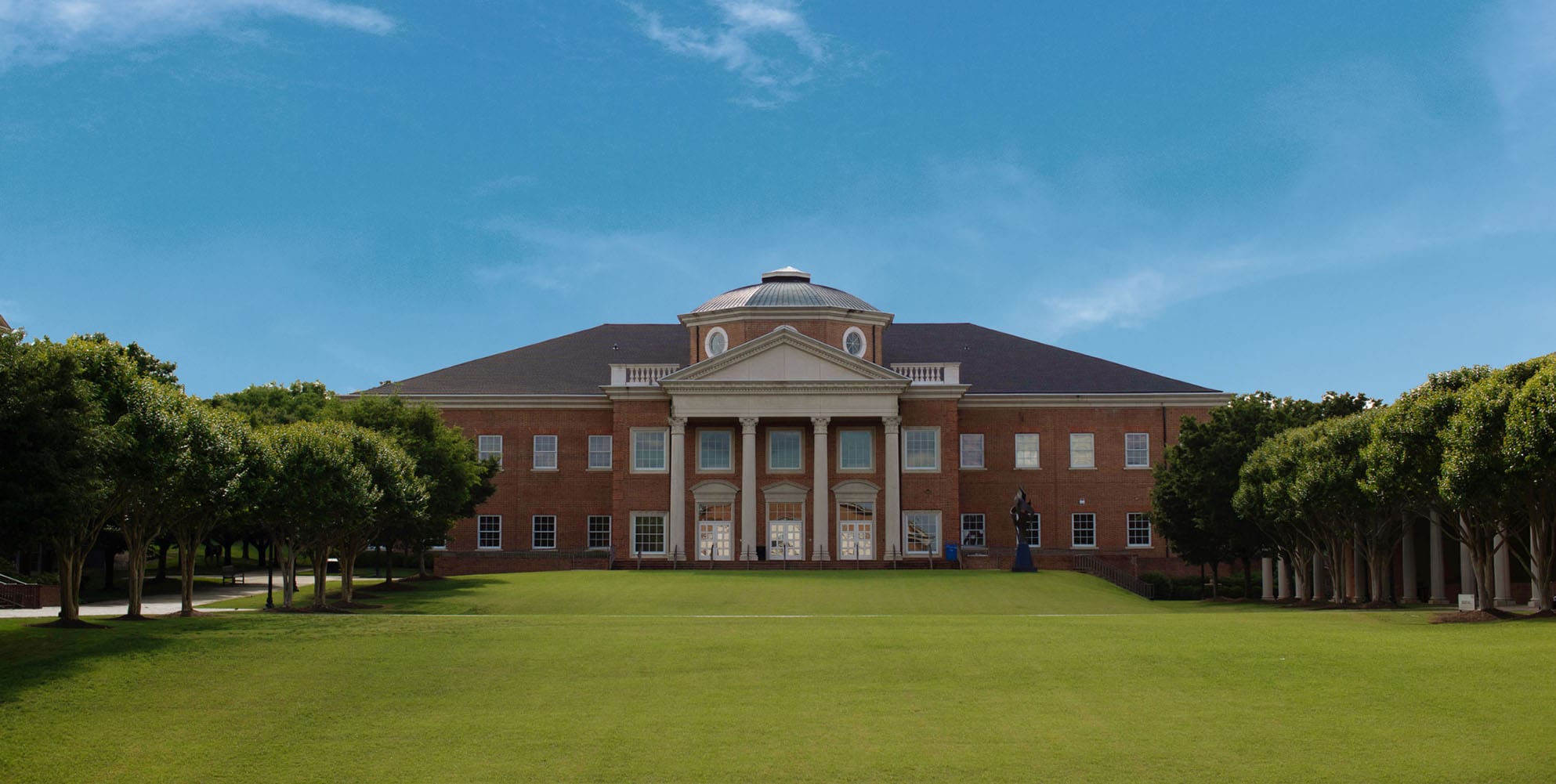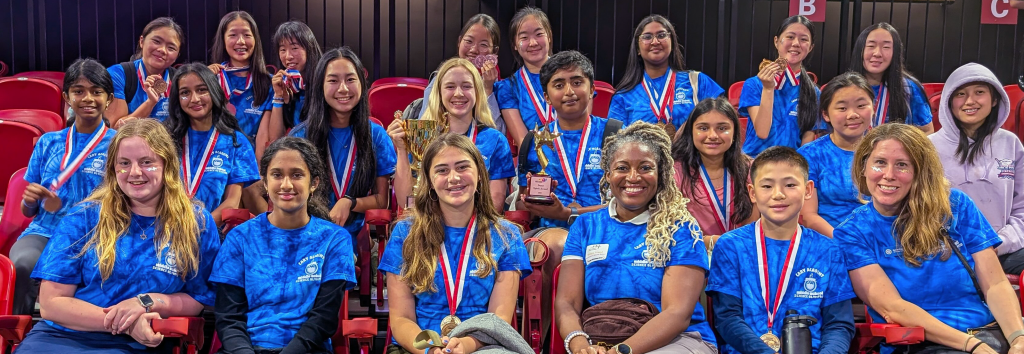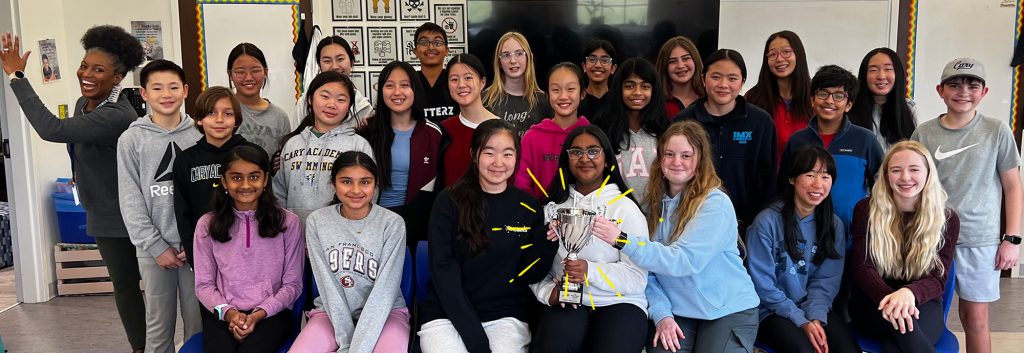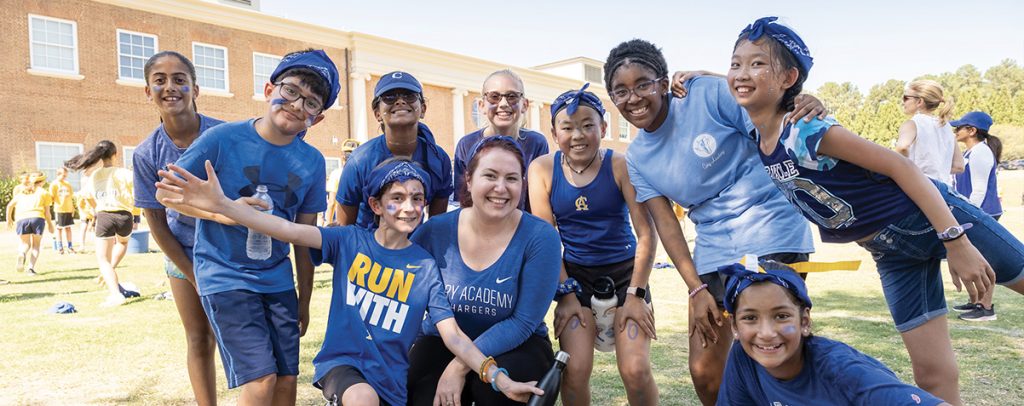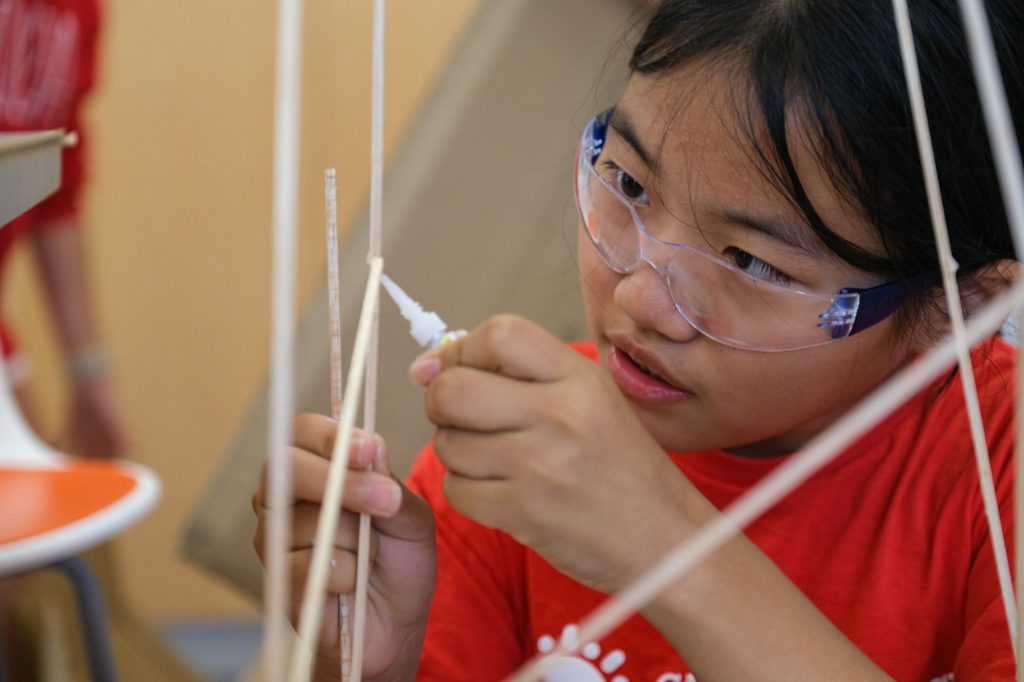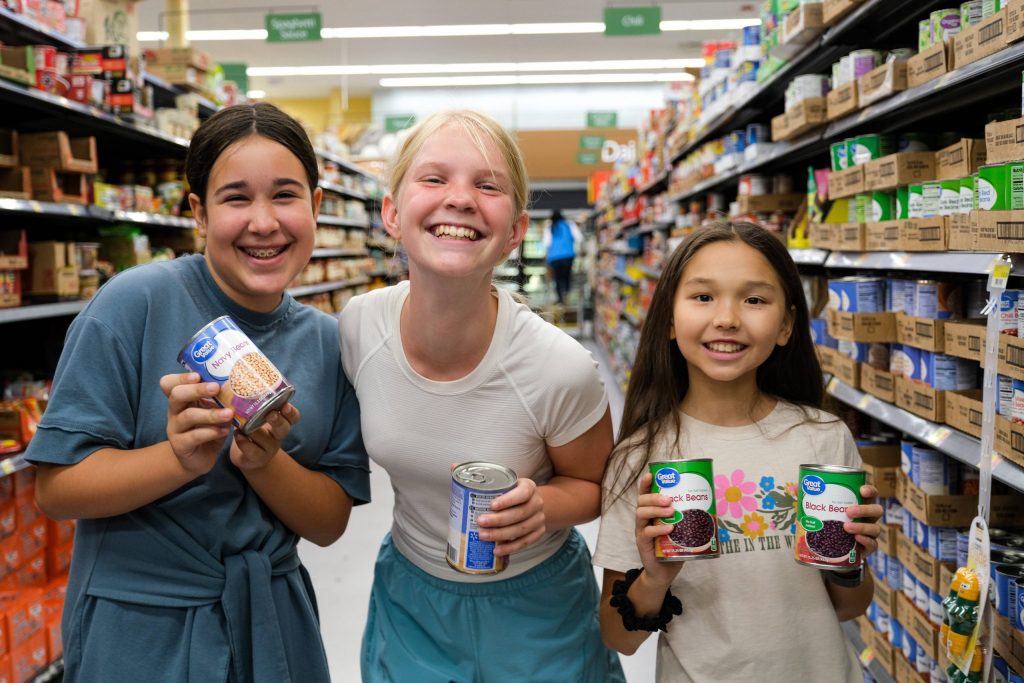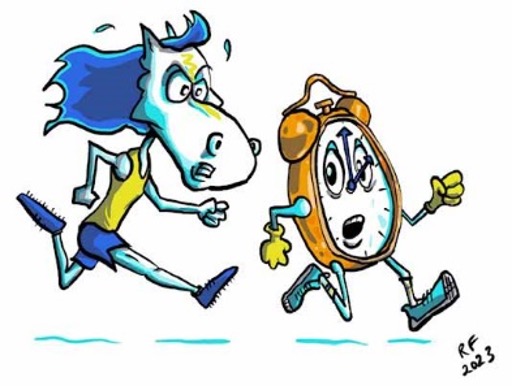In CA’s Middle School science labs, students don’t merely learn the facts and figures of science. Instead, they transform into engaged scientists, activists, and communicators thanks to an evolving year-long teaching and learning approach that blends classroom science with immersive experiential and social-emotional learning opportunities and equity-minded service.
Moving beyond theory to engage with science tangibly, students in the eighth grade explore topics from water chemistry to marine biology and develop an understanding of how science intersects with broader societal issues and can serve as a tool for advocacy and change.
Student response has been overwhelmingly positive.
“We seamlessly combined writing, claim-evidence-reasoning (CER), lab stations, and real-world connections. My work in the class felt exciting and meaningful. You couldn’t help but stay engaged,” shares Emma Curtis Maury, ‘28, who discovered a passion for molecular biology last year in science teacher Rachel Bringewatt’s eighth-grade classroom.
“We could see how what we were learning in our science class could make a real impact. It connected those dots for us in meaningful ways,” offers Margot Perkinson, ’28, and Sofia Townsend-Lopez, ’28, who also discovered their shared interest in science communications.
A SCIENTIFIC SPIRAL
CA’s Middle School science program has evolved over the years to be more focused on environmental stewardship while retaining some of its early characteristic spiral design. From grades six through eight, some core scientific disciplines—biology, chemistry, physics, and earth science—are intentionally revisited at increasing levels of complexity. This approach ensures students build a strong, interconnected foundation while steadily developing their scientific knowledge and skills.
“The spiral approach is designed to minimize gaps in students’ understanding while avoiding unnecessary repetition,” explains Andrew Chiaraviglio, a longtime faculty member instrumental in shaping the eighth-grade curriculum. “It’s about revisiting topics with greater depth each time, helping students connect ideas and build a cohesive framework for understanding science.”
The various disciplines are woven into a cohesive narrative each year by anchoring lessons in a thematic framework, ensuring that science becomes a rich, interconnected exploration rather than a collection of disconnected facts.
“We’ve found that anchoring lessons in a narrative helps unify what students learn. It contextualizes concepts and makes connections among disciplines more accessible and meaningful,” explains Chiaraviglio.
Key scientific practices, like collecting and interpreting data and constructing arguments through claim-evidence-reasoning (CER), are introduced early and reinforced throughout the middle school years. These skills prepare students not only to analyze scientific claims, but also to engage critically with the world around them.
A YEAR OF INTERDISCIPLINARY LEARNING
The eighth-grade curriculum is anchored in a “Water Planet” theme.
The year begins with the basics—water’s molecular structure and chemical properties—establishing fundamental principles that students will apply throughout the year. Then, throughout the fall, students explore how land use, human activity, and water quality are connected. They also develop key lab skills that enable them to assess water quality and environmental indicators of ecosystem health.
After focusing on freshwater ecosystems, students take a deep dive into marine biology and water-energy connections. The Water Planet theme also encompasses the human body, a seemingly unexpected but natural connection highlighting water’s essential role in cellular processes like osmosis, photosynthesis (essential for food production on which humans depend), and respiration. “We want students to see science as the study of a dynamic system where elements are interconnected,” shares Chiaraviglio.
Learning extends beyond the classroom throughout the year. Students engage in fieldwork, testing water quality at SAS’s nearby pond, and analyzing real-world case studies, such as PFAS contamination and hog farming impacts on North Carolina waterways. Additionally, students are introduced to ArcGIS, a powerful tool used around the world by environmental scientists and city planners.
“At Cary Academy all students have access to ArcGIS, which can be used to analyze any data with a spatial/geographic component,” continues Chiaraviglio. “This tool also includes a variety of apps with which the user can craft effective visual presentations with many-layered, data-rich maps”.
Thanks to a collaboration between Bringewatt and Chiaraviglio, and the Center for Community Engagement’s Service Learning Director Maggie Grant and Program Coordinator CJ Bell, the eighth-grade science curriculum includes experiences with the broader community. Over the last two years, students have had the opportunity to learn from real-world local experts, including guest speakers from organizations like the Haw River Assembly and Chapel Hill’s Stormwater Management Division, Great Raleigh Cleanup, and North Carolina Central University. They have even engaged in virtual dialogue with a scientist involved in international collaborative research focusing on the impacts of climate change on plankton populations in the Arctic.
In the winter, after learning from experts, students develop their presentation skills. In a peer marine biology symposium, students share their research about specific ocean ecosystem environments and their threats, including climate change, invasive species, and microplastics. This collaborative experience not only sharpens their research and critical thinking skills, but also builds confidence and fosters scientific identity.
“I love seeing them explain their work to each other,” says Bringewatt. “They stop looking to me for answers and start turning to each other—seeing themselves as scientists.”
By spring, the budding scientists are ready to tackle broader and more complex global issues like the water-energy nexus—the thorny revelation that the water crisis is inextricably intertwined with global energy concerns—and grapple with the lack of singular solutions. They evaluate real integrated water energy solutions for their scientific soundness, practicality for the communities they intend to serve, and scalability to other communities, devising creative ways to share their findings with peers.
Students are encouraged to communicate their work through creative formats that resonate with them, such as poems on hydropower, sculptures of off-grid water technologies, or podcasts on pollution.
“Science isn’t isolated from the community. It is a part of it,” says Bringewatt. “Scientists are not just responsible for understanding the data but for communicating it effectively to nonscientist audiences.”
GETTING HANDS-ON
Service and experiential learning opportunities are thoughtfully woven throughout the year to augment learning. To date, students have engaged with local experts from advocacy groups like the Walnut Creek Wetland Community Partnership, watched an environmental justice documentary during a Community Day, and used X Days to organize stream clean-ups, among other things.
“These intentional experiential and service opportunities help students develop critical social-emotional skills like empathy, self-awareness, and collaboration,” explains Maggie Grant, Service Learning Director. “They teach students to engage ethically with their communities, critically examine privilege and power, and recognize systemic inequities in environmental harm.”
This approach empowers students to become advocates for social and environmental justice, a thread that starts with conversations in the fall and continues into the spring. For example, last spring, students explored tools for inclusive science communication. They also analyzed links between inequitable water accessibility and adverse health consequences and considered the historical and systemic factors perpetuating these inequities.
“We want our students to think critically—not just about the data, but about its larger context,” shares Bringewatt. “Who is impacted by water pollution and water accessibility? How can we use science to address inequities? What is our responsibility as scientists to interrogate data critically, communicate findings, and advocate for change?”
CJ Bell, Program Coordinator for the Center for Community Engagement, underscores the importance of these connections: “We want students to see science not just as a collection of facts but as a tool for understanding and improving the world.”
A NEW CAPSTONE
This year, Chiaraviglio and Bringewatt hope to continue building on the curriculum and students’ experiences in eighth-grade science. Thanks to one of CA’s Innovation Curriculum grants, the spring will include a new six-week capstone project developed collaboratively by Bringewatt and Chiaraviglio. Designed to be an authentic, hands-on application of the year’s learning, the capstone will ask students to explore environmental issues through one of four focus areas: data experimentation, communication, policy analysis, or systems exploration.
“We want to give students multiple avenues to engage deeply based on their interests with topics that matter to them,” says Chiaraviglio.
A student might study freshwater fish populations in North Carolina, gathering data from local streams or creating visual infographics using data available on the web to communicate findings in a way that is easily accessible to non-scientists. Others might explore policies related to water quality regulations or investigate how environmental inequities affect marginalized communities.
For Bringewatt, Chiaraviglio, Grant, and Bell, the goal isn’t just to prepare students for the next science class.
“We are teaching them to engage with the real world and figure out who they want to be as scientists,” reflects Bringewatt. “There is more to science than lab work; there is policy, communication, advocacy, and activism. We want every student to leave the lab with a sense of who they are as scientists and how their work can fit into our broader community and world.”
EMPOWERING STUDENTS
The revamped curriculum’s impact is clear. The first cohort of students has transitioned to Upper School, bringing their enthusiasm with them.
Now a freshman, Curtis Maury recently co-led a genome science-themed X Day for Middle Schoolers alongside her former teacher. “It was fun learning to teach younger students and make them love science—just like Ms. Bringewatt’s class did for me,” she says.
Inspired by their eighth-grade experiences, Perkinson and Townsend-Lopez have founded a science communications club in the Upper School. “I discovered I could help others, and that made science exciting,” says Perkinson, who created an environmental podcast about hydropower as her final project in Bringewatt’s class year.
“Our science communications club focuses on making science entertaining and fun for everyone,” continues Townsend-Lopez, who created a fictional narrative about renewable energy incorporating real scientific principles for her eighth-grade project. “We want to educate people who might not otherwise have access to or engage with this knowledge,” continues Townsend-Lopez.
For Bringewatt and Chiaraviglio, these transformations are the ultimate reward.
“It’s amazing to see students who once hesitated to call themselves scientists now confidently engaging with environmental policy or water quality data,” she reflects. That spark of passion, that connection between the classroom and the real world—if I could bottle that moment, I would.”
Learn more about students’ year-end Water Planet projects
